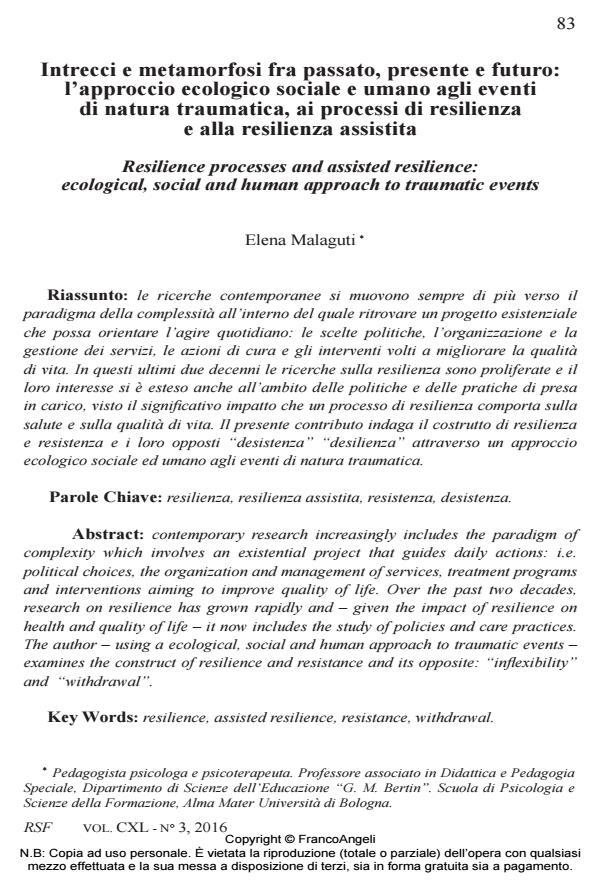Resilience processes and assisted resilience: ecological, social and human approach to traumatic events
Journal title RIVISTA SPERIMENTALE DI FRENIATRIA
Author/s Elena Malaguti
Publishing Year 2016 Issue 2016/3
Language Italian Pages 15 P. 83-97 File size 690 KB
DOI 10.3280/RSF2016-003007
DOI is like a bar code for intellectual property: to have more infomation
click here
Below, you can see the article first page
If you want to buy this article in PDF format, you can do it, following the instructions to buy download credits

FrancoAngeli is member of Publishers International Linking Association, Inc (PILA), a not-for-profit association which run the CrossRef service enabling links to and from online scholarly content.
Contemporary research increasingly includes the paradigm of complexity which involves an existential project that guides daily actions: i.e. political choices, the organization and management of services, treatment programs and interventions aiming to improve quality of life. Over the past two decades, research on resilience has grown rapidly and - given the impact of resilience on health and quality of life - it now includes the study of policies and care practices. The author - using a ecological, social and human approach to traumatic events - examines the construct of resilience and resistance and its opposite: "inflexibility" and "withdrawal".
Keywords: Resilience, assisted resilience, resistance, withdrawal
Elena Malaguti, Intrecci e metamorfosi fra passato, presente e futuro: l’approccio ecologico sociale e umano agli eventi di natura traumatica, ai processi di resilienza e alla resilienza assistita in "RIVISTA SPERIMENTALE DI FRENIATRIA" 3/2016, pp 83-97, DOI: 10.3280/RSF2016-003007